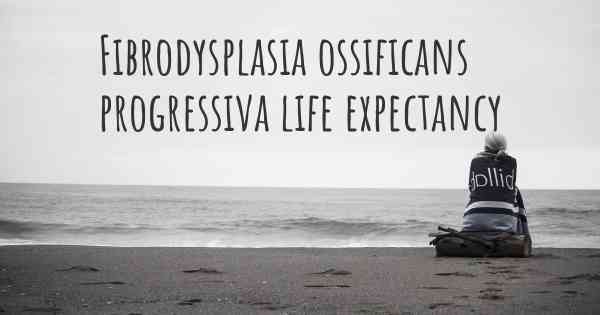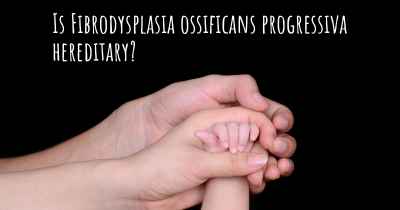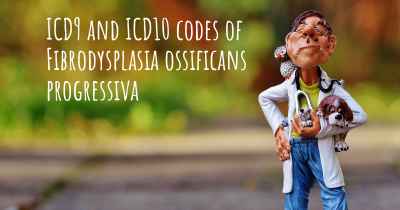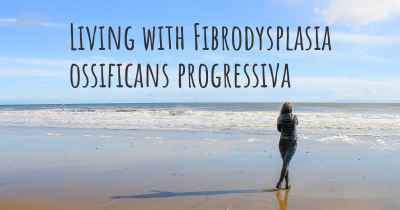What is the life expectancy of someone with Fibrodysplasia ossificans progressiva?
Life expectancy of people with Fibrodysplasia ossificans progressiva and recent progresses and researches in Fibrodysplasia ossificans progressiva

Fibrodysplasia ossificans progressiva (FOP) is an extremely rare genetic disorder characterized by the progressive formation of bone in muscles, tendons, and ligaments. Unfortunately, FOP has a significant impact on life expectancy. There is currently no cure for FOP, and the condition worsens over time, leading to severe disability and complications. On average, individuals with FOP have a reduced life expectancy due to respiratory complications, infections, and complications from immobility. However, it is important to note that the progression of FOP can vary from person to person, and some individuals may live into their 40s or beyond. Early diagnosis, proper management, and supportive care can help improve the quality of life for individuals with FOP.
Fibrodysplasia ossificans progressiva (FOP) is an extremely rare genetic disorder characterized by the progressive formation of bone in muscles, tendons, and other connective tissues. This condition affects approximately 1 in 2 million people worldwide, making it one of the rarest diseases known to medical science.
Life expectancy is a common concern for individuals diagnosed with FOP and their families. Unfortunately, FOP is a debilitating and incurable condition that significantly impacts life expectancy. The disease typically begins to manifest in early childhood, with the first signs appearing during infancy or early childhood. These signs often include malformed big toes, which are a hallmark feature of FOP.
As FOP progresses, individuals experience episodes of painful soft tissue swelling, known as flare-ups. These flare-ups can be triggered by trauma, injury, or even spontaneously without any apparent cause. During these episodes, the affected soft tissues undergo a process called heterotopic ossification, where bone forms in abnormal locations.
The formation of extra bone gradually restricts movement and leads to progressive disability. Over time, individuals with FOP may lose the ability to perform everyday tasks, such as walking, eating, or even breathing without assistance. The formation of bone in vital organs, such as the chest or neck, can be particularly life-threatening.
Given the severity and progressive nature of FOP, it is challenging to provide a precise life expectancy range. However, studies suggest that the average life expectancy for individuals with FOP is around 40 years. It is important to note that this is an average, and some individuals may live longer or shorter lives depending on various factors, including the severity of their condition and the availability of appropriate medical care and support.
Managing FOP requires a multidisciplinary approach involving various healthcare professionals, including geneticists, orthopedic surgeons, and physical therapists. While there is no cure for FOP, treatment focuses on symptom management, preventing flare-ups, and maintaining mobility for as long as possible.
It is crucial for individuals with FOP to receive specialized medical care from healthcare providers familiar with the condition. This can help optimize their quality of life, minimize complications, and provide appropriate support and resources.
Supportive care and early intervention play a vital role in managing FOP. Physical therapy and assistive devices can help maintain mobility and prevent joint contractures. Additionally, pain management strategies, such as medications and adaptive techniques, can help alleviate discomfort associated with flare-ups.
Research efforts are ongoing to better understand the underlying mechanisms of FOP and develop potential treatments. While there is currently no cure, advancements in genetic research and medical interventions offer hope for future therapeutic options.
In conclusion, Fibrodysplasia ossificans progressiva is a rare and devastating genetic disorder characterized by the abnormal formation of bone in soft tissues. The condition significantly impacts life expectancy, with an average range of around 40 years. However, it is important to remember that each individual's experience with FOP is unique, and the severity of the condition can vary. With appropriate medical care, support, and ongoing research, there is hope for improved management and potential treatments in the future.








